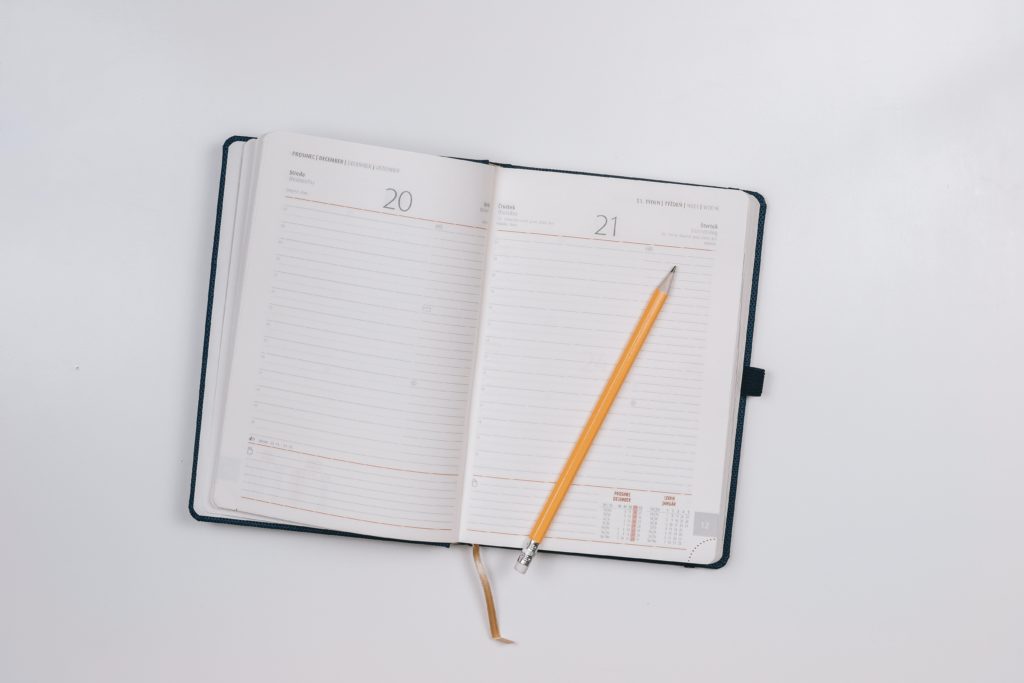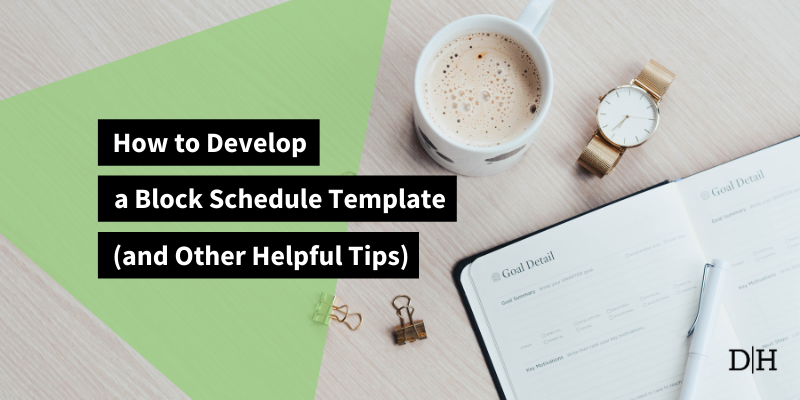If you feel like you could be spending your time more effectively, you’re not alone. Up to 80% of the average workday is spent on low-value or unproductive activities, which leaves only 20% for truly meaningful tasks.
But while most people understand the importance of becoming more productive, finding an approach that works in each situation is difficult. After all, each person has their own unique challenges, priorities, and time availability, so how can you address all that and still be able to remain focused on the most important task at that moment?
Well, for many people, the answer is a block schedule.
It’s a relatively simple way to manage your time that, if implemented correctly, can completely revolutionize how you spend your workdays and make you a truly time-efficient entrepreneur that gets the most out of every minute they have available.
But what is a block schedule? And why should you use it?
Let’s answer these questions below and look at how you can create a block schedule template that will be easy to use in your situation.
What is a Block Schedule?
Block scheduling, also known as time blocking, is a time management method that uses divided blocks of time to structure the work you have to do on any given day. You separate the time you have available in blocks, allocating each task a given amount of time, and move on to the next job when it’s time.
When you assign a set time for each task during the day, it allows you to focus on that single task for the entire time period, freeing up your mind from distractions and allowing you to get into a deep work state.
The main keys to success when using this method are being consistent and planning ahead.
At first, this type of approach might seem unnatural, and you will be tempted to check your email or switch to another task. But as you get used to the new type of time management, you will become less likely to give in to those distractions, and your brain will be able to fully focus on the task at hand.
You will also need to learn to plan ahead and make the time for daily adjustments to your schedule based on your results. You’ll also have to do a weekly planning session, where you lay out the time blocks for the upcoming week and then adjust them as you go based on which tasks were completed and which still need your attention the next day.
If you create a block schedule template that’s tailored to your needs, you will quickly become accustomed to filling up your schedule in blocks, and the planning process won’t take long at all, especially once you get to know how fast you can really work and can estimate the time blocks more accurately.
Why Use a Block Schedule?
Even though a block schedule is an intriguing concept, many people are dissuaded by its seemingly restrictive nature. Looking at time blocks and thinking about fitting tasks into them can seem daunting or even stressful, so it might seem better to just stick to an open-ended schedule where you can go with the flow and jump from tasks as necessary.
However, the problem with that approach is that it relies on context switching, which is an absolute killer of your productivity. When your workday is fragmented, you will never reach a deep work state and continually be distracted by the little things that don’t add any real value to your work or business.
With that in mind, let’s look at some of the most significant benefits using a block schedule template can offer.
It Helps You Focus

For most people, achieving focus at work is a top priority. Whether you’re running a business or are part of a team, you need to balance taking care of your primary tasks with meetings, emails, calls, and many distractions that can quickly derail an entire day.
With the help of a daily block schedule template, you will gain an invaluable tool for structuring your tasks in a way that makes the most sense. Then, you won’t have to think about the secondary tasks or what you’ll have to do next – everything will be in your schedule, and you can move on as soon as the timer says you should.
Sure, using this approach requires discipline, but it can also be very liberating once you can allocate your entire mental energy towards a singular task and feel confident that you can tackle every outstanding job once its time comes.
Prevents You from Procrastinating
Another huge benefit of using a block schedule template is that it will prevent you from procrastinating. In most cases, procrastination is nothing more than a feeling of being overwhelmed, which results from you having to juggle too many tasks or challenges at once.
At that point, your brand just wants to shut off and relax, and the desire to procrastinate and do something unproductive quickly sets in.
Meanwhile, when you have structure and use a block schedule, you can remain in control of your tasks and will have a much easier time staying focused. As you get immersed in the singular task you have at hand, you can safely get lost in the current challenge, creating a much more exciting and rewarding work environment that you will actually look forward to.
Gives More Control of Your Time
Finally, as you master using a block schedule in your work, you will likely notice that it empowers you to get the most out of the time you have each day. For most people, the biggest challenge in work is getting through the essential tasks without getting bogged down by the little things that can eat up a lot of the time.
And with a block schedule template, you can develop habits that will completely reshape how you go through a typical workday, the types of tasks you get done, and the times when you allow yourself to take care of the little things without allowing them to disrupt your focus.
How to Make a Block Schedule Template
As I already mentioned before, switching to a block schedule requires a commitment and an understanding of your circumstances and work requirements. Therefore, the best approach is to create your own block schedule template you can use every week instead of relying on a generic one you can find online.
To develop your block schedule, use an online app or a journal to group activities into time blocks. At first, don’t overwhelm yourself with a long time period and try to develop a block schedule for the upcoming day.
Consider what you need to get done, how long it might take, and in what order you want to go through tasks. Ideally, schedule the most critical tasks for the first part of the day and, at first, be more generous with how much time you allocate to them so that you know you’ll have enough.
Since this approach is relatively simple, you don’t need a complicated block schedule template. Instead, you can focus on convenience, using a format that best suits your habits and makes it the easiest to follow through on the daily and weekly planning sessions.
Block Schedule Tips

Even though block scheduling is incredibly powerful, it will only be as effective as you are willing to use it. And at least at first, you may face some challenges as you get used to the new way of going through tasks, making some people revert to their old habits thinking that this method isn’t for them.
That’s why it’s good to draw inspiration from the successes of others and use proven best practices that will keep you motivated and eager to follow through on the schedule that you set out.
Let’s look at a few helpful tips below.
Know That Adjustments Will Be Necessary
I’ve already mentioned this before, but it’s too important not to reiterate:
The beginning of the path towards using a block schedule template won’t be perfect. You will probably underestimate the time required for some tasks (and might overestimate in some cases as well), which will make it seem like your entire schedule is falling through and will create an urge to quit.
Fight that urge and be prepared for the timing to be off initially. The minor struggles you go through initially will be worth it tenfold once you master your time and take complete control of your day.
For leaders, block scheduling can also help in discovering which unproductive tasks eat up a lot of their time and leading them to learn to develop a successful delegation strategy.
Commit to Each Time Block
Another crucial part of success with time blocking is actually following through on each time block on your schedule. After all, what’s the point of creating the plan if you’re not going to follow it afterward.
Once you start working on a task, don’t allow yourself to do anything else until the time you allocated for it passes. Obviously, short breaks where you recharge your brain are permitted, but switching to other tasks is strictly off-limits if you want this method to work.
Reward Yourself
In my program, Managing Happiness, the main focus is on helping high-performing entrepreneurs change their habits and get the most out of life, which is only possible by taking control of one’s time.
So, once you master the time blocking technique and free up time, you should be able to find time for the things that truly make you happy.
Make sure to block off time for things you love or that you know are important but you couldn’t find time for before. This will be your reward that shows that time blocking works and that it’s worth the effort you put into sticking to the daily schedule.
Bottom Line
While block scheduling may not be the only way to manage your time, it’s proven to be one of the most effective methods you could use.
How are your experiences with time blocking? And what have you found is important when trying to stick to your schedule? Share in the comments below!




